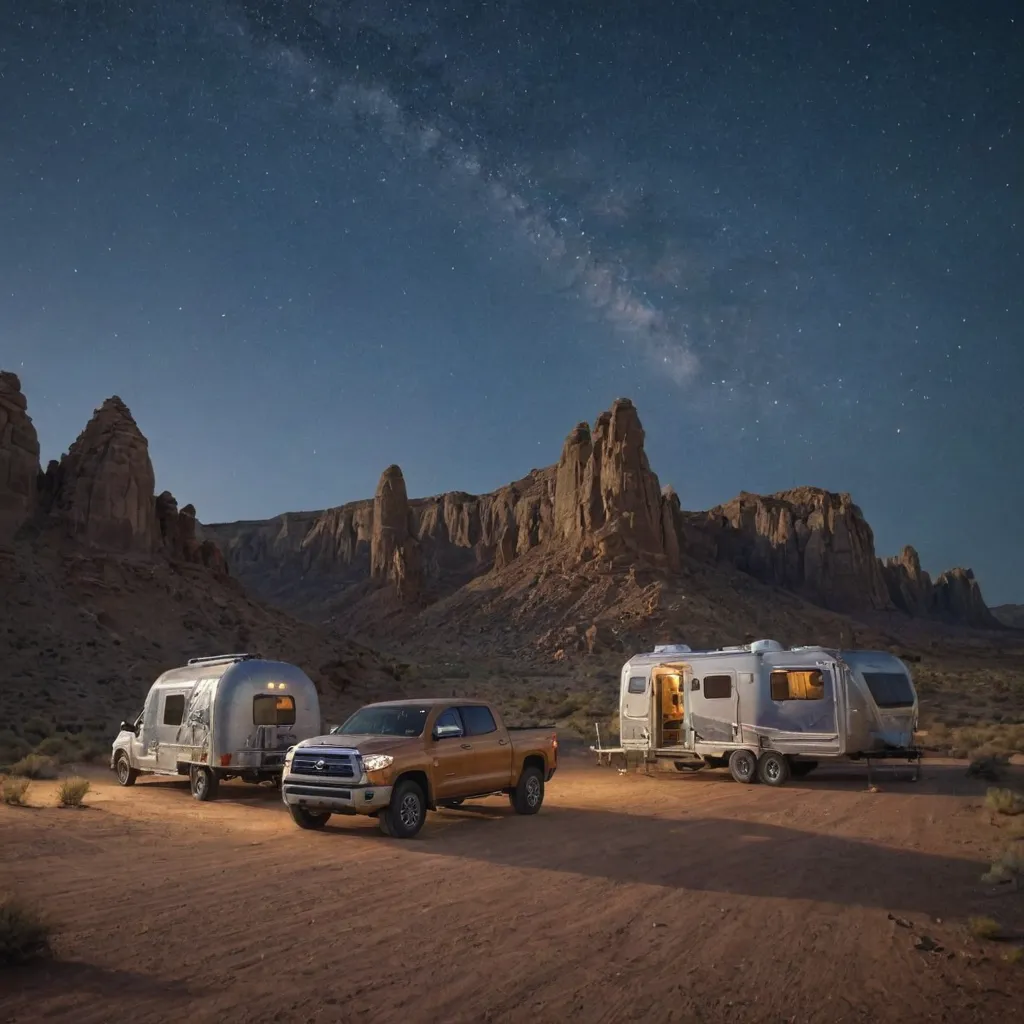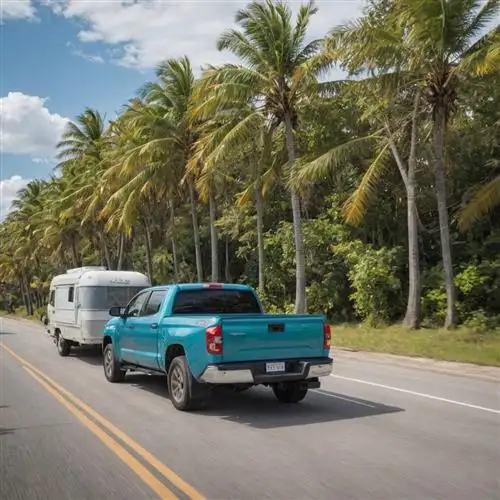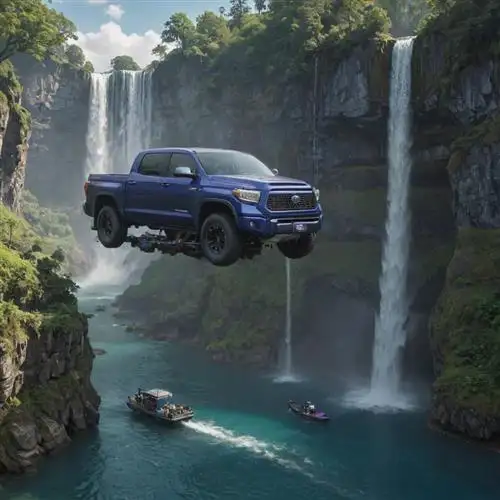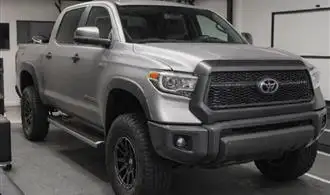
Understanding Towing Capacity
The Toyota Tundra is renowned for its impressive towing capabilities, making it a popular choice for those with heavy-duty hauling needs. At the heart of this capability is the truck's towing capacity, a crucial metric that determines how much weight the Tundra can safely tow. Towing capacity is influenced by a variety of factors, including the Tundra's engine size, drivetrain configuration, and even the specific trim level and optional equipment.
To maximize towing efficiency with your Toyota Tundra, it's essential to understand the intricacies of towing capacity. The Tundra's towing capacity can vary significantly, with base models capable of towing up to 8,300 pounds, while higher trims and configurations can handle even more, reaching up to 12,000 pounds. It's important to consult your Tundra's specific towing capacity, which can be found in the vehicle's owner's manual or on the manufacturer's website.
When it comes to towing, the Tundra's powertrain plays a crucial role. Models equipped with the powerful 5.7-liter V8 engine generally have a higher towing capacity than those with smaller engines. Similarly, four-wheel-drive (4WD) configurations often boast a higher towing capacity compared to two-wheel-drive (2WD) variants.
Beyond the engine and drivetrain, the Tundra's payload capacity is another important consideration. Payload capacity refers to the maximum weight the truck can carry, including passengers, cargo, and the weight of any equipment or accessories. Exceeding the payload capacity can negatively impact the Tundra's towing performance and safety.
Curious About the Must-Have Toyota Tundra Accessories? Discover Them Here
Selecting the Right Trailer
Choosing the right trailer for your Toyota Tundra is crucial for maximizing towing efficiency and ensuring a safe, comfortable driving experience. When selecting a trailer, consider the following factors:
Trailer Type: The type of trailer you choose should align with the specific needs of your towing tasks. Common trailer types include enclosed trailers, open utility trailers, car haulers, and specialty trailers for recreational vehicles or livestock. Carefully evaluate the size, weight, and intended use of the trailer to ensure it is compatible with your Tundra's capabilities.
Trailer Weight: Ensure the trailer's empty weight, plus the weight of your cargo, does not exceed the Tundra's maximum towing capacity. Overloading can compromise handling, braking, and fuel efficiency, potentially leading to dangerous situations. Refer to your Tundra's owner's manual or consult with a professional to determine the appropriate maximum trailer weight.
Trailer Brakes: Many states require trailers above a certain weight to have their own braking system. Ensure the trailer is equipped with electric or hydraulic brakes that are compatible with your Tundra's towing system. This will enhance control and stability, especially when descending steep inclines.
Trailer Hitches and Couplers: Choose a hitch and coupler combination that is rated for your Tundra's towing capacity. Properly installing and securing the trailer to the hitch is crucial for safe towing. Consult with a professional to ensure the hitch and coupler are compatible and installed correctly.
Trailer Axles and Suspension: Ensure the trailer's axle and suspension system are designed to support the weight of your cargo. This will help maintain stability and control, especially when traversing uneven terrain or making sharp turns.
Trailer Lighting: Proper lighting, including taillights, turn signals, and brake lights, is essential for safe towing. Verify that the trailer's lighting system is compatible with your Tundra and that all lights are functioning correctly.
Proper Weight Distribution
When it comes to towing with your Toyota Tundra, proper weight distribution is paramount. The way you load your trailer or haul can significantly impact your truck's handling, stability, and overall towing efficiency. By understanding the principles of weight distribution, you can maximize the capabilities of your Tundra and ensure a safe, comfortable, and fuel-efficient towing experience.
One of the most crucial factors in weight distribution is the placement of the trailer's tongue weight. This weight, which represents the downward force exerted on the Tundra's hitch, should be carefully calculated and adjusted to fall within the recommended range, typically 10-15% of the total trailer weight. Distributing the weight too far forward or backward can compromise the Tundra's stability and braking performance, leading to potential safety hazards and decreased towing efficiency.
In addition to the tongue weight, the overall weight balance of the trailer and its contents is essential. Heavier items should be placed closer to the trailer's axles, with lighter items distributed evenly throughout. This balanced weight distribution helps maintain the Tundra's steering responsiveness and ensures the trailer tracks smoothly behind the truck, reducing the strain on the suspension and drivetrain components.
Regular maintenance and periodic checks of your Tundra's suspension and hitch components are also vital in maintaining proper weight distribution. Ensure that your truck's tires are properly inflated, the suspension is in good working order, and the hitch is securely attached and properly adjusted. Refer to the Tundra Maintenance - Solving the Problem of Costly Repairs article for more detailed information on maintaining your Tundra for optimal towing performance.
Improving Braking Performance
Braking performance is a critical aspect of towing efficiency with your Toyota Tundra. When hauling heavy loads, the added weight can significantly impact your vehicle's braking capabilities, making it crucial to optimize your Tundra's braking system. One of the primary ways to enhance braking performance is through proper maintenance and upgrading components as needed.
Regular brake inspections and maintenance are essential to ensure your Tundra's brakes are in optimal condition. This includes checking brake pads, rotors, and calipers for any signs of wear or damage. Replacing worn-out components with high-quality, heavy-duty parts can greatly improve your Tundra's braking power and responsiveness when towing.
Another important factor to consider is the type of brake fluid used in your Tundra. Upgraded, high-performance brake fluid can help maintain consistent braking performance, even under heavy-duty towing conditions. Flushing and replacing your brake fluid at the recommended intervals can also contribute to improved braking efficiency.
In addition to maintaining your Tundra's factory braking system, you may also consider upgrading to a more robust aftermarket braking system. This could include larger, ventilated brake rotors, high-performance brake pads, and even a upgraded brake caliper kit. These enhancements can significantly increase your Tundra's braking power and provide greater control when towing heavy loads.
It's also crucial to ensure your Tundra's brakes are properly adjusted and balanced. Uneven brake pad wear or imbalanced braking forces can lead to increased stopping distances and poor control. Regular brake adjustments and wheel alignments can help maintain optimal braking performance.
Furthermore, the condition of your Tundra's tires can also impact braking efficiency. Properly inflated, high-quality tires with sufficient tread depth can grip the road better, enhancing your Tundra's stopping power. Regularly rotating and replacing your tires can help maintain consistent braking performance.
Maximizing Fuel Efficiency
Towing a heavy load can significantly impact your Toyota Tundra's fuel efficiency. However, there are several strategies you can employ to optimize your fuel consumption and keep your costs down. Proper vehicle maintenance, driving techniques, and load management are crucial factors in maximizing your Tundra's towing efficiency.
Regular maintenance is essential for maintaining your Tundra's fuel efficiency. Ensure your engine is tuned up, your tires are properly inflated, and your air filters are clean. These simple steps can improve your vehicle's fuel economy and overall performance. Additionally, consider using the recommended grade of motor oil and fuel, as they can contribute to enhanced efficiency.
Driving techniques play a significant role in maximizing fuel efficiency during towing. Avoid sudden accelerations and harsh braking, as these actions can significantly increase fuel consumption. Maintain a steady speed, and use cruise control whenever possible to maintain a consistent velocity. When approaching hills or inclines, plan ahead and adjust your speed accordingly to maintain momentum and avoid unnecessary strain on the engine.
Load management is another critical aspect of maximizing your Tundra's towing efficiency. Properly distribute the weight of your trailer or cargo, ensuring the heaviest items are positioned close to the Tundra's rear axle. This balanced weight distribution can improve handling and reduce the strain on the engine, leading to improved fuel efficiency. Additionally, consider the aerodynamics of your load and use accessories, such as trailer skirts or deflectors, to minimize wind resistance and further enhance your fuel economy.
















